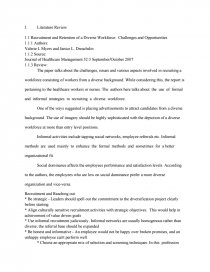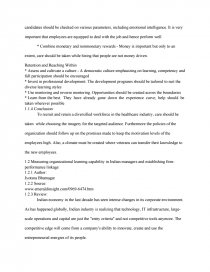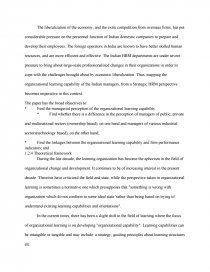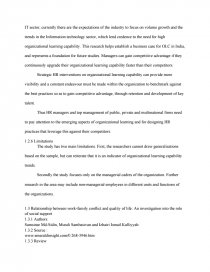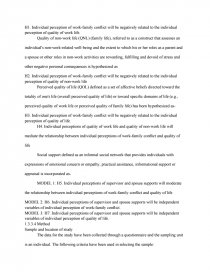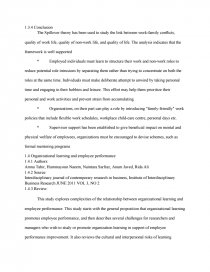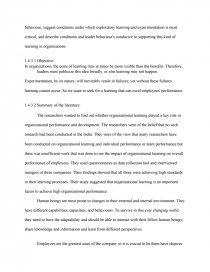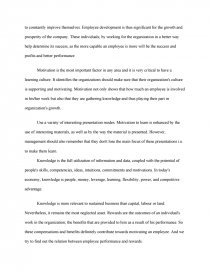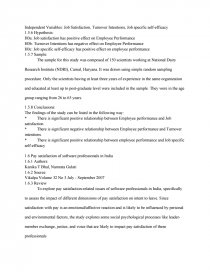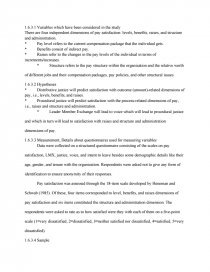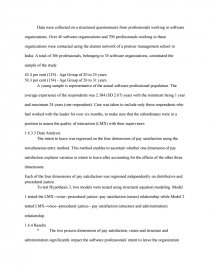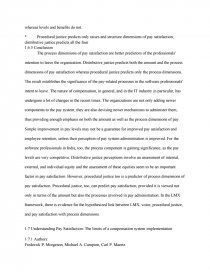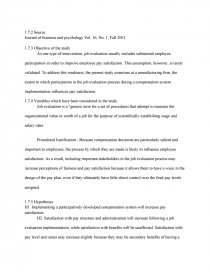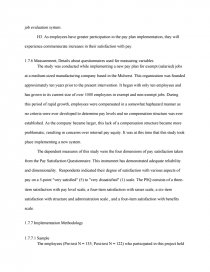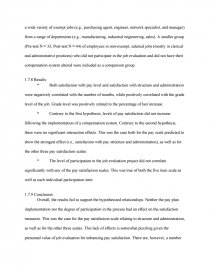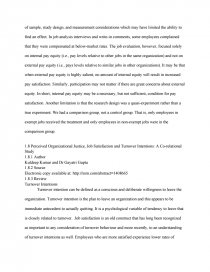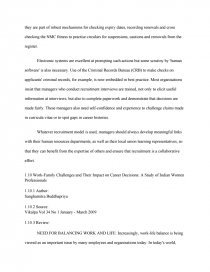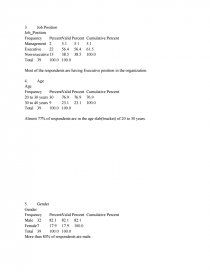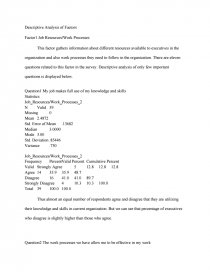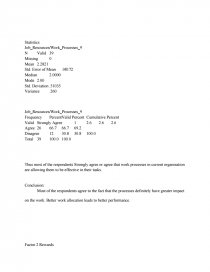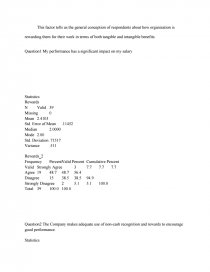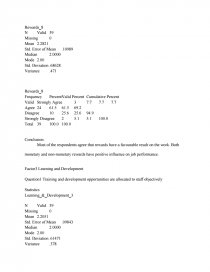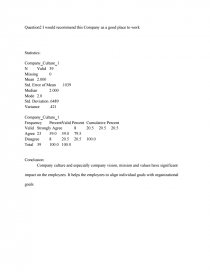Recruitment and Retention of a Diverse Workforce
Essay by Stella • August 16, 2012 • Research Paper • 8,125 Words (33 Pages) • 2,065 Views
Essay Preview: Recruitment and Retention of a Diverse Workforce
I. Literature Review
1.1 Recruitment and Retention of a Diverse Workforce: Challenges and Opportunities
1.1.1 Authors:
Valerie L Myers and Janice L. Dreachslin
1.1.2 Source:
Journal of Healthcare Management 52:5 September/October 2007
1.1.3 Review:
The paper talks about the challenges, issues and various aspects involved in recruiting a workforce consisting of workers from a diverse background. While considering this, the report is pertaining to the healthcare workers or nurses. The authors here talks about the use of formal and informal strategies in recruiting a diverse workforce.
One of the ways suggested is placing advertisements to attract candidates from a diverse background. The use of imagery should be highly sophisticated with the depiction of a diverse workforce at more than entry level positions.
Informal activities include tapping social networks, employee referrals etc. Informal methods are used mainly to enhance the formal methods and sometimes for a better organizational fit.
Social dominance affects the employees performance and satisfaction levels. According to the authors, the employees who are low on social dominance prefer a more diverse organization and vice-versa.
Recruitment and Reaching out
* Be strategic - Leaders should spell out the commitment to the diversification project clearly before starting
* Align culturally sensitive recruitment activities with strategic objectives. This would help in achievement of value driven goals
* Use informal recruitment judiciously. Informal networks are usually homogenous rather than diverse; the referral base should be expanded
* Be honest and informative - An employee would not be happy over broken promises, and an unhappy employee can't perform well
* Choose an appropriate mix of selection and screening techniques. In this profession candidates should be checked on various parameters, including emotional intelligence. It is very important that employees are equipped to deal with the job and hence perform well
* Combine monetary and nonmonetary rewards - Money is important but only to an extent, care should be taken while hiring that people are not money driven.
Retention and Reaching Within
* Assess and cultivate a culture - A democratic culture emphasizing on learning, competency and full participation should be encouraged
* Invest in professional development. The development programs should be tailored to suit the diverse learning styles
* Use mentoring and reverse mentoring. Opportunities should be created across the boundaries
* Learn from the best. They have already gone down the experience curve; help should be taken wherever possible
1.1.4 Conclusion
To recruit and retain a diversified workforce in the healthcare industry, care should be taken while choosing the imagery for the targeted audience. Furthermore the policies of the organization should follow up on the promises made to keep the motivation levels of the employees high. Also, a climate must be created where veterans can transfer their knowledge to the new employees.
1.2 Measuring organizational learning capability in Indian managers and establishing firm-performance linkage
1.2.1 Author:
Jyotsna Bhatnagar
1.2.2 Source:
www.emeraldinsight.com/0969-6474.htm
1.2.3 Review:
Indian economy in the last decade has seen intense changes in its corporate environment. As has happened globally, Indian industry is realizing that technology, IT infrastructure, large-scale operations and capital are just the "entry criteria" and not competitive tools anymore. The competitive edge will come from a company's ability to innovate, create and use the entrepreneurial energies of its people.
The liberalization of the economy, and the extra competition from overseas firms, has put considerable pressure on the personnel function of Indian domestic companies to prepare and develop their employees. The foreign operators in India are known to have better skilled human resources, and are more efficient and effective. The Indian HRM departments are under severe pressure to bring about large-scale professionalized changes in their organizations in order to cope with the challenges brought about by economic liberalization. Thus, mapping the organizational learning capability of the Indian managers, from a Strategic HRM perspective becomes imperative in this context.
The paper has the broad objectives to:
* Find the managerial perception of the organizational learning capability
* Find whether there is a difference in the perception of managers of public, private and multinational sectors (ownership based), on one hand and managers of various industrial sectors(technology based), on the other hand;
* Find the linkages between the organizational learning capability and firm performance indicators; and
1.2.4 Theoretical framework
During the last decade, the learning organization has become the aphorism in the field of organizational change and development. It continues to be of increasing interest in the present decade. Theorists have criticized the field and state, while the perspective taken in organizational learning is sometimes a normative one which presupposes that "something is wrong with organization which do not conform to some ideal state 'rather than being based on trying to' understand existing learning capabilities and orientations".
In the current times, there has been a slight shift in the field of learning where the focus of organizational learning is on developing "organizational capability". Learning capabilities can be intangible or tangible and may include: a strategy; guiding principles about learning structures etc.
An organization has a certain mix of organizational learning capabilities and may evolve to certain generic capabilities, unique to its own culture and
...
...
